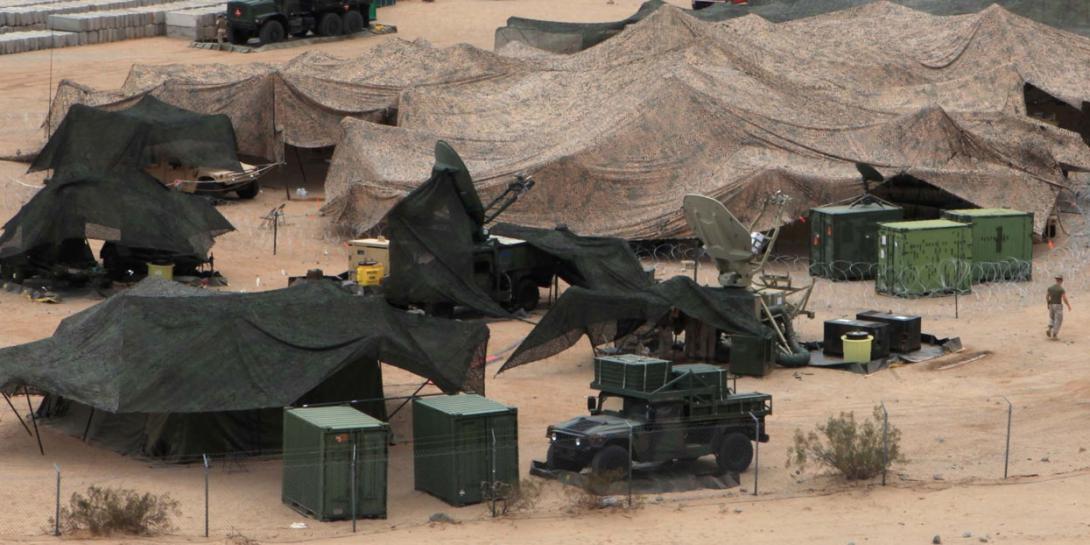Rugged Computing Is Not One-Size-Fits-All
Defense computing systems need to operate in a highly disparate range of environments. Depending on the program’s requirements, ruggedness is a function of the environment each system will be deployed in. A system that operates just fine in a pressurized aerospace application, such as a wide-bodied aircraft, may have issues in a marine application, and may be completely unacceptable in a vehicle being driven through a hot and sandy desert. Even within airborne applications, the environment might be a wing-mounted pod that is completely unpressurized. Computing systems for each of these environments must be ruggedized to match requirements.
When rugged ... isn’t
When applying commercial off-the-shelf (COTS) computing systems to defense program environments, the typical environmental categories are ground vehicles, shipboard to include subsurface, airborne and space, which we’ll leave out of this discussion. While each of the first three can have commonality with the others, the center of the rugged curve is unique.
All too often, COTS vendors who aren’t knowledgeable or serious about the defense market slap the word “rugged” on a system and declare it ready for military service. Choosing one of these systems is a dangerous decision for a defense contractor. Real COTS suppliers categorize their rugged systems into variations—typically three to five different types. Because the heat generated by computer systems is a key reliability factor, these variations are typically segmented by whether the electronics are air- or conduction-cooled systems, and then further segmented for different temperature and shock and vibration levels. These ruggedization categories are applied very differently at the system level when used in ground, shipboard and airborne environments.
Surviving the pounding of ground environments
In vetronics, a term typically used for military ground vehicles, heat transfer and ruggedization are the two key attributes. Equipment in these vehicles can range from negative 40 degrees C to 85 degrees C. And while there are 10,000 pounds of metal in the chassis of an M1A2 Abrams tank, it can’t be used as a giant heat sink if it’s deployed in the desert. Worse, heat sinks that connect the electronics to the vehicle can act like hammers in shock or high-vibration situations, literally pounding electronics and breaking assemblies.
Ground vehicles are consistently subjected to more shock and vibration than other rugged environments. Continuous bouncing disperses like waves to the electronics frame, requiring mitigation techniques to prevent circuit boards from cracking and soldered components from shearing off. One technique is to float the microprocessor and other susceptible items by suspending them in a liquid chamber that doesn’t see peak shock and vibration.
Cool and comfortable on the salty seas
In marine applications, many of a ship’s command and control computers and servers operate in air-conditioned environments below decks. In this case, systems may be liquid- or air-cooled and are often rugged rack-mounted systems.
But moist, salt air is highly corrosive, and rugged electronics require conformal coating not only to protect exposed metal surfaces but to mitigate the chance of corroding electrical connections and solder joints. Besides the salt and moderate temperatures, the pounding of heavy seas, the whoosh of a carrier’s steam catapult and the impulse shock of heavy deck guns or missile launches sends shock waves into electronics.
When rack-mount isn’t rugged enough, the best mitigation is for the system to be fully sealed with high-shock resistance. A variation of a ground vehicle’s sealed COTS system works well in above-deck naval applications.
Under pressure in the air
Airborne is similar to marine applications, except that the air pressure is constantly changing due to takeoff, landing and flying at altitude. Air pressure changes can affect some electronics and nearly all batteries. Internally trapped microbubbles force their way out of component packages at higher altitudes, bursting batteries and sometimes releasing toxic gasses, which must be accounted for in these rugged COTS systems.
Luckily, lots of cold air can be forced in from outside the aircraft using tubes for ram air, but the system design must account for the shock of landing forces and vibration from helicopter rotors.
Command post in a tent
One additional rugged environment is the remote data center, where battlefield commanders set up a base with traditional Internet, Wi-Fi and cellular equipment. Even here, rugged servers and displays are needed because the environment can be extremely dirty in terms of dust, sand and rain that can get inside typical commercial systems and cause failures.
Regardless of the environment, it’s always important to remember that, in many cases, the operators of the equipment are soldiers, and their primary function is protection. If a soldier has a problem operating the equipment, it’s because it wasn’t designed appropriately. Soldiers can’t be expected to conform to equipment—the system must be matched to the environment and to the operators.
Ben K. Sharfi is chief architect, General Micro Systems Inc.





Comments